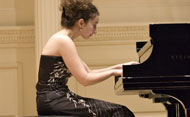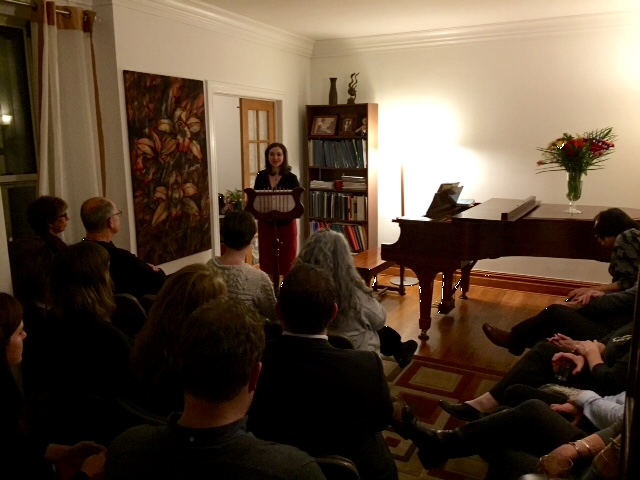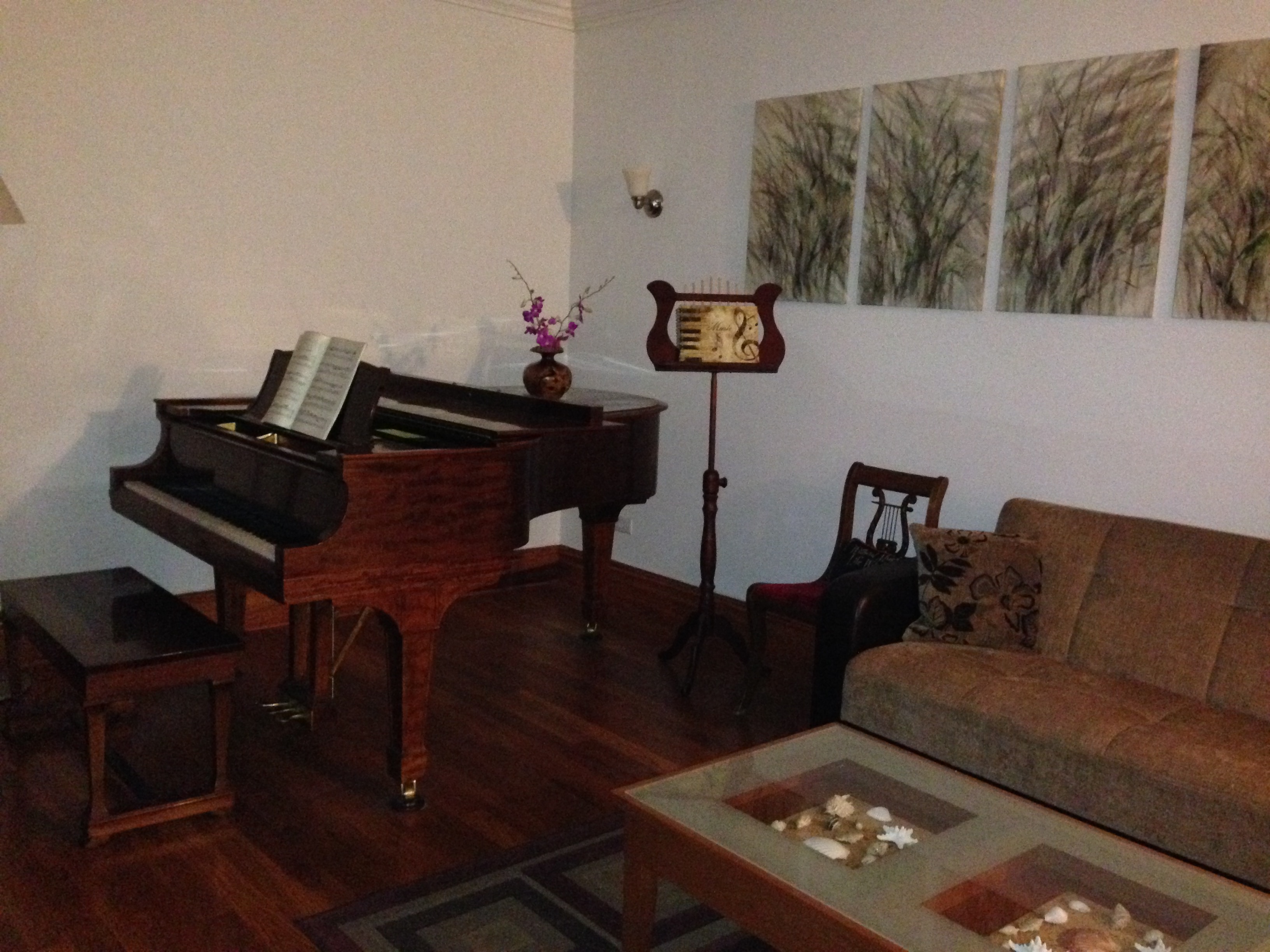Beethoven’s Complete Works for Cello and Piano – Part I
In this special recital appearance, the Smigelskiy-Grinberg Duo, consisting of cellist Serafim Smigelskiy and pianist Yelena Grinberg, will explore Beethoven’s Complete Works for Cello and Piano, performing Beethoven’s early-period, joyful Sonata in F Major for cello and piano, opus 5, no. 1 (1796) and his middle-period, virtuosic and brilliant Sonata in A Major for cello and piano, op. 69 (1807/1808), along with two popular and delightful sets of variations for cello and piano – Variations in G Major on “See the conquering hero comes” from Judas Maccabaeaus, WoO 45 and Variations in F Major on “win Madchen oder Weibchen” from The Magic Flute, op. 66.
Beethoven’s Variations in G Major on “See the conquering hero comes” from Judas Maccabaeaus, WoO 45, were composed in 1796 – the same year as his two cello-piano sonatas of Opus 5. It begins with a Handelian, Baroque theme, marked Allegretto, in the sunny, bucolic key of G Major. This stately theme is then followed by twelve contrasting variations. The first variation is written for piano solo while the second variation hands over the theme to the cello, with piano accompaniment set in triplets. Progressive diminution of the theme becomes evident by the third variation, which becomes recast and embellished in sixteenth notes. The fourth variation makes a sudden, expressive switch to G minor, with poignant chromaticism along its way. The cheerful G-Major home key reemerges in the fifth variation, marked dolce. The sixth variation subjects the theme to canonic imitation between the two players. The cello takes on a more active role in the seventh variation, with triplets set in perpetual motion against the chordal piano accompaniment, marked pp. Beethoven’s stormy, dramatic mood comes to the fore in the eighth, fiery G-minor variation, marked forte. The original theme’s melody, albeit more chromatically embellished, is heard in the ninth variation with the return to the G-Major mode and the tenth variation, where the melody is assigned to the cello with a forte accompaniment in the piano. The eleventh variation is recast in Adagio tempo, with an improvisational, cadenza-like piano opening. In the final, twelfth variation, a quick Allegro in 3/8 rounds off this charming set of variations on an exuberant note with a ff ending.
In the same year, 1796, while on a visit to Berlin, Beethoven also composed his first two cello-piano sonatas, which became published as Opus 5. These two youthful sonatas were, in many ways, unprecedented and ingenious for their democratic treatment of both players on both virtuosic and expressive grounds. In fact, Opus 5 emerged as first true cello-piano sonatas comparable in prestige and caliber to Mozart’s violin sonatas (Mozart, alas, never wrote any sonatas for cello and piano), where the cellist is treated as an equal partner to the pianist. In fact, a number of new technical effects emerge in the cello part in these two early sonatas, such as virtuosic arpeggios, figuration patterns, tricky bowings, double stops, challenging shifts of register, and unusual sonorities. Architecturally, both sonatas – opus 5, no. 1 in F Major and opus 5, no. 2 in G minor – begin with a slow introduction that comes to a halt at the dominant and then segues into a full-bodied Allegro, which is then followed by a charming Rondo finale to close each sonata. In the first Sonata in F Major for cello and piano, opus 5 – the more Mozartean of the two – Beethoven achieves thematic balance between both players as Mozart already revealed in his violin-piano sonatas. That is, both players share thematic material equally in a continual, exciting musical dialogue with one another. In the Rondo, we likewise hear an ongoing, concerto-like contrast between the main theme and the intervening episodes which are shared reciprocally by both players throughout.
Cast in the same tonality and cheerful mood as Opus 5, no. 1, Beethoven’s Variations in F Major on “win Madchen oder Weibchen” form The Magic Flute, op. 66, were composed just two years later, in 1798. Inspired by Mozart’s Singspiel opera, The Magic Flute (1791), Beethoven took up the catchy, folk-like Allegretto theme and subjected it to twelve delightful variations, which reveal a creative marriage of Mozartean wit and charm and Beethovenian humor and mischief. The first variation is written for piano solo, while the second variation gives the lead to the cello part, with chromatic saturation in the piano part. The third variation gives back the spotlight to the piano with its increasing virtuosic brilliance. The fourth variation constitutes a sweet (dolce) dialogue between the two players. The fifth variation recasts the theme in dotted rhythms with imitative counterpoint. The sixth variation is a virtuosic study in broken arpeggios, while the seventh, more smooth and lyrical variation, is marked sempre pianissimo for both players alike. The eighth variation reverts to a playful, sempre staccato, texture with parallel thirds in the piano part. In the ninth variation, the theme is subjected to learned canonic imitation. The tenth and eleventh variations form a pair, both recast in doleful, F-minor mode. The tenth variation is a poignant, ornamented Adagio, while the eleventh variation, Poco Adagio, quasi Andante, is even more chromatic and expressive than its preceding counterpart with a pulsating piano accompaniment. The final, twelfth variation, Allegro, dispels the shadow of F-minor mode of the last two variations with the return, attacca subito, to F-Major and comes to an end on a surprisingly understated note, in pianissimo.
The kind of cello-piano reciprocity that can be witnessed in Opus 5 is elevated to an even more grandiose level of brilliance and virtuosity in Beethoven’s Sonata in A Major for cello and piano, op. 69, composed a decade later, in 1807/1808. This was the only cello-piano sonata written during his so-called Heroic Middle Period. Cast in four movements, Opus 69 is written on a larger scale, and is concerto-like in both its scope and sound. The first movement, Allegro ma non tango, unfolds in an extended sonata allegro form that begins with cello’s thematic solo entrance, which is then imitated by the piano with a brilliant flourish. Two contrasting themes alternate in mood and expression – heroic and lyrical, respectively. The second movement, a rather lengthy and rhythmically tense Scherzo – Allegro molto, with two identical Trios, is syncopated throughout with zesty, offbeat sf accents. A short, third movement, Adagio cantabile, which serves as a slow and expressive inner movement, acts more like a transitional bridge to the brilliant and virtuosic Finale, Adagio vivace, that propels the music to its exhilarating A-Major ending.
– Program Notes by Yelena Grinberg





